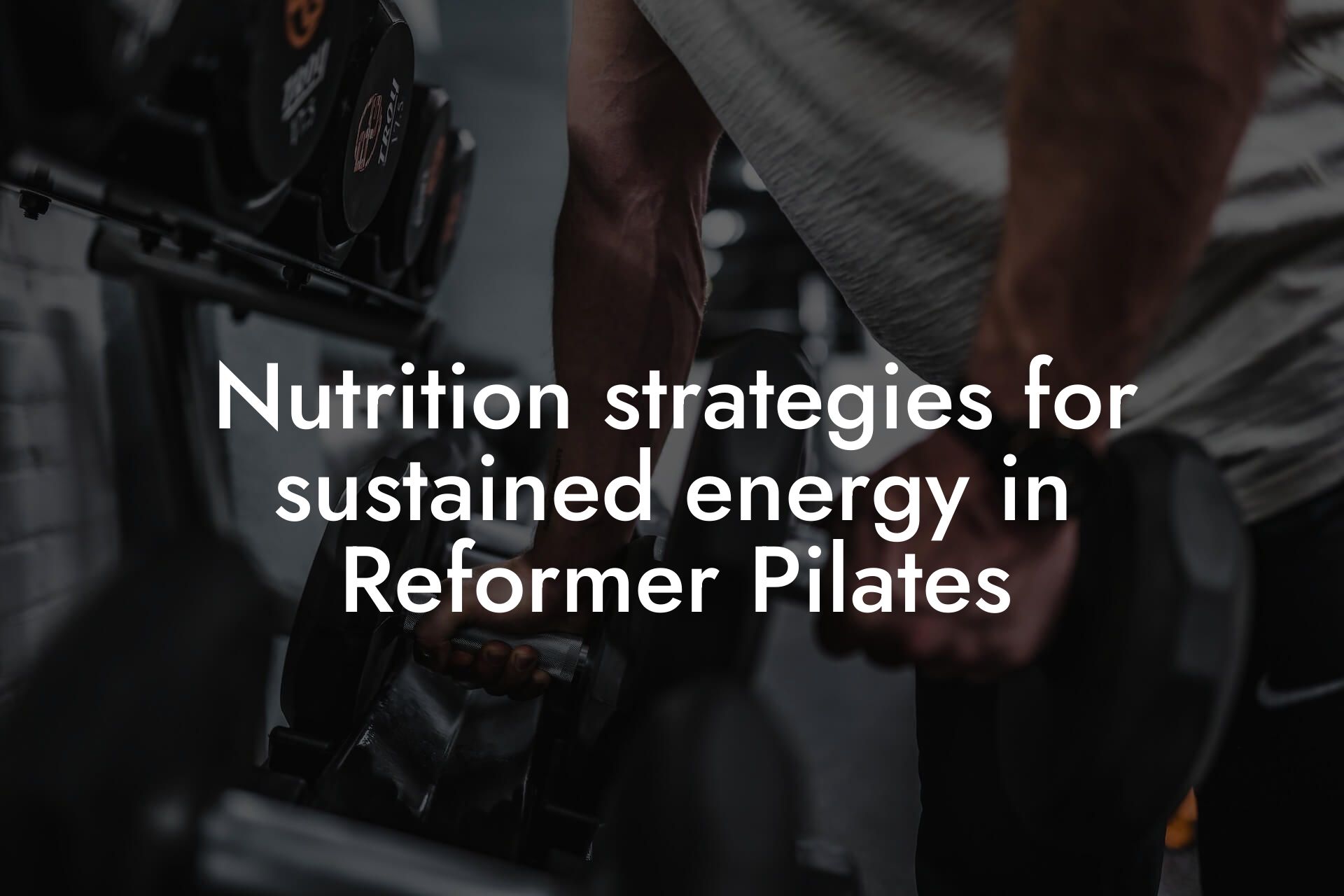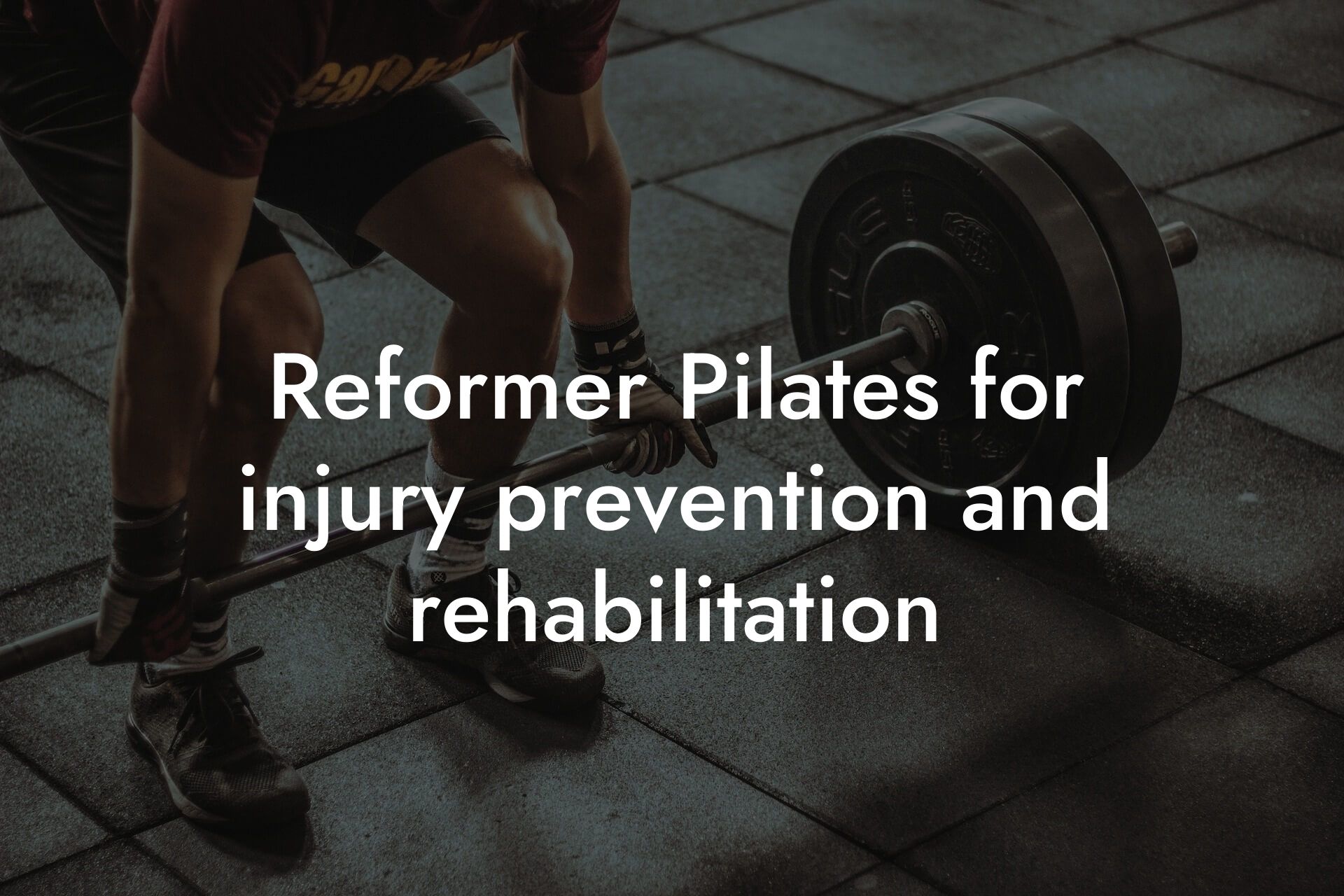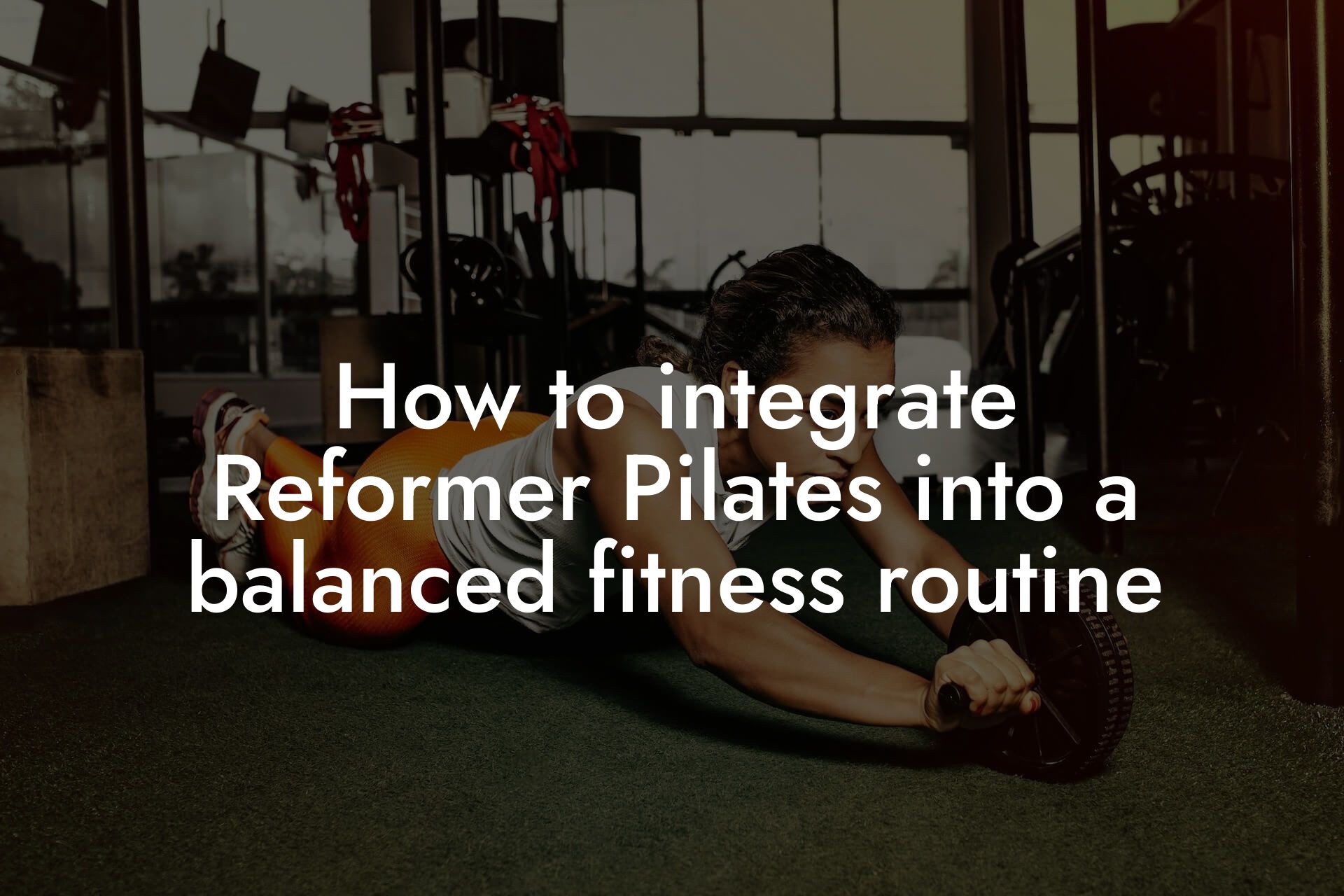Understanding the Connection Between Body Fat and Reformer Pilates
As a high-earning professional, you understand the importance of maintaining a healthy and fit physique. Reformer Pilates is an excellent way to improve your overall fitness and physical appearance. However, having excess body fat can hinder your progress and make it challenging to achieve the results you desire. In this article, we'll explore the connection between body fat and Reformer Pilates, and provide you with a comprehensive guide on how to reduce body fat to improve your Reformer Pilates results.
Table of Contents
- Understanding the Connection Between Body Fat and Reformer Pilates
- Why Excess Body Fat Affects Reformer Pilates Performance
- The Importance of Measuring Body Fat Percentage
- Nutrition: The Key to Reducing Body Fat
- The Role of Macronutrients in Weight Loss
- Exercise: Combining Cardio and Resistance Training
- High-Intensity Interval Training (HIIT) for Fat Loss
- Stress Management and Sleep: The Forgotten Factors in Fat Loss
- Putting it all Together: A Comprehensive Plan for Reducing Body Fat and Improving Reformer Pilates Results
- Frequently Asked Questions
Why Excess Body Fat Affects Reformer Pilates Performance
Excess body fat can affect your Reformer Pilates performance in several ways. Firstly, it can reduce your range of motion, making it difficult to perform exercises that require flexibility and mobility. Secondly, excess body fat can put additional strain on your joints, increasing the risk of injury. Finally, excess body fat can make it challenging to engage your core muscles, which are essential for maintaining proper form and technique in Reformer Pilates.
The Importance of Measuring Body Fat Percentage
Measuring body fat percentage is crucial to understanding your current fitness level and tracking your progress. At Tano Performance Group, we use a DEXA machine to provide a complete body assessment, including body fat percentage. This information is essential for creating a personalized fitness plan that targets your specific needs and goals. By measuring your body fat percentage, you can identify areas for improvement and make data-driven decisions to optimize your fitness routine.
Nutrition: The Key to Reducing Body Fat
Nutrition plays a critical role in reducing body fat. A healthy and balanced diet that is high in protein, moderate in complex carbohydrates, and low in fat can help you achieve your weight loss goals. Focus on whole, unprocessed foods such as lean meats, fish, fruits, vegetables, and whole grains. Avoid sugary drinks, fast food, and processed snacks that are high in calories and low in nutrients. Additionally, stay hydrated by drinking plenty of water throughout the day.
The Role of Macronutrients in Weight Loss
Macronutrients, including protein, carbohydrates, and fat, are essential for weight loss. Protein is critical for building and repairing muscle tissue, while carbohydrates provide energy for your workouts. Fat is also important for hormone production and brain function. Aim to consume 1.6-2.2 grams of protein per kilogram of body weight, 2-3 grams of complex carbohydrates per kilogram of body weight, and 0.5-1 gram of healthy fats per kilogram of body weight.
Exercise: Combining Cardio and Resistance Training
Exercise is a crucial component of reducing body fat. A combination of cardio and resistance training can help you burn calories, build muscle, and increase your metabolism. Aim to perform at least 150 minutes of moderate-intensity cardio exercise per week, and incorporate resistance training exercises into your routine 2-3 times per week. Focus on compound exercises such as squats, deadlifts, and bench press that work multiple muscle groups at once.
High-Intensity Interval Training (HIIT) for Fat Loss
High-Intensity Interval Training (HIIT) is a highly effective way to burn fat and improve cardiovascular fitness. HIIT involves short bursts of high-intensity exercise followed by brief periods of rest. This type of training has been shown to increase fat loss, improve insulin sensitivity, and boost metabolism. Incorporate HIIT workouts into your routine 2-3 times per week, and focus on exercises such as sprints, burpees, and jump squats.
Stress Management and Sleep: The Forgotten Factors in Fat Loss
Stress management and sleep are often overlooked but are critical components of reducing body fat. Chronic stress can increase cortisol levels, leading to belly fat storage and weight gain. Poor sleep quality and duration can also disrupt hormones that regulate hunger and fullness, leading to overeating and weight gain. Aim to get 7-9 hours of sleep per night, and incorporate stress-reducing activities such as meditation, yoga, or deep breathing exercises into your daily routine.
Putting it all Together: A Comprehensive Plan for Reducing Body Fat and Improving Reformer Pilates Results
Reducing body fat and improving Reformer Pilates results requires a comprehensive approach that incorporates nutrition, exercise, stress management, and sleep. By measuring your body fat percentage, creating a personalized fitness plan, and incorporating the strategies outlined in this article, you can achieve your fitness goals and improve your overall health and well-being. Remember to be patient, stay consistent, and celebrate your progress along the way.
At Tano Performance Group, we're committed to helping high-earning professionals like you achieve their fitness goals and improve their overall health and well-being. Contact us today to learn more about our DEXA body assessment and personalized fitness planning services.
Frequently Asked Questions
What is the ideal body fat percentage for optimal Reformer Pilates results?
For men, the ideal body fat percentage for optimal Reformer Pilates results is between 10-15%, while for women, it's between 18-23%. Having a healthy body fat percentage can improve your overall physical performance, increase your range of motion, and enhance your overall Pilates experience.
Why is reducing body fat important for Reformer Pilates?
Reducing body fat is essential for Reformer Pilates because it allows for more efficient movement, improved flexibility, and better overall performance. Excess body fat can put additional strain on your joints and muscles, making it more challenging to perform Pilates exercises correctly and increasing the risk of injury.
How does excess body fat affect my Reformer Pilates performance?
Excess body fat can affect your Reformer Pilates performance in several ways. It can reduce your range of motion, making it more difficult to perform exercises that require flexibility and mobility. It can also increase your risk of injury, as excess fat can put additional strain on your joints and muscles. Furthermore, excess body fat can make it more challenging to engage your core muscles, which are essential for maintaining proper form and control during Pilates exercises.
What are the benefits of reducing body fat for Reformer Pilates?
Reducing body fat can have numerous benefits for your Reformer Pilates practice. It can improve your overall physical performance, increase your range of motion, and enhance your flexibility and mobility. It can also reduce your risk of injury, improve your posture, and boost your confidence and self-esteem.
How can I reduce my body fat percentage?
There are several ways to reduce your body fat percentage. A combination of a healthy diet, regular exercise, and lifestyle changes can help you achieve your goals. Focus on eating a balanced diet that is high in protein, fiber, and healthy fats, and low in processed foods and added sugars. Regular cardio and strength training exercises can also help you burn fat and build lean muscle mass.
What role does nutrition play in reducing body fat?
Nutrition plays a crucial role in reducing body fat. A healthy diet that is high in protein, fiber, and healthy fats, and low in processed foods and added sugars, can help you lose weight and reduce your body fat percentage. Focus on eating whole, unprocessed foods, and avoid fad diets and quick fixes that can be detrimental to your overall health.
How can I track my body fat percentage?
There are several ways to track your body fat percentage. You can use a body fat scale, which uses bioelectrical impedance analysis (BIA) to estimate your body fat percentage. You can also use skinfold calipers, which measure the thickness of your skin folds to estimate your body fat percentage. Additionally, you can use a dual-energy X-ray absorptiometry (DXA) scan, which uses X-rays to measure your bone density and body composition.
What is the difference between body fat percentage and weight loss?
Body fat percentage and weight loss are related but distinct concepts. Weight loss refers to the reduction of overall body weight, which can include both fat mass and lean mass. Body fat percentage, on the other hand, refers to the proportion of fat mass to total body weight. While weight loss is often the primary goal for many people, reducing body fat percentage is a more accurate indicator of overall health and fitness.
How long does it take to see results from reducing body fat?
The amount of time it takes to see results from reducing body fat can vary depending on several factors, including your starting point, diet, exercise routine, and overall lifestyle. Generally, you can expect to see noticeable results within 6-12 weeks of consistent effort. However, it's essential to remember that reducing body fat is a long-term process that requires patience, dedication, and persistence.
What are the benefits of Reformer Pilates for overall health and fitness?
Reformer Pilates can have numerous benefits for overall health and fitness. It can improve your posture, balance, and coordination, as well as increase your flexibility, mobility, and strength. It can also reduce your risk of injury, improve your bone density, and boost your mental health and well-being.
How often should I practice Reformer Pilates to see results?
The frequency of your Reformer Pilates practice can impact your results. Ideally, you should aim to practice Reformer Pilates 2-3 times per week, with at least one day of rest in between. This can help you build strength, improve your flexibility, and enhance your overall physical performance.
What are the common mistakes people make when trying to reduce body fat?
There are several common mistakes people make when trying to reduce body fat. These include crash dieting, overexercising, and neglecting proper nutrition. It's essential to remember that reducing body fat is a long-term process that requires patience, dedication, and a holistic approach to health and fitness.
How can I stay motivated to reduce my body fat percentage?
Staying motivated to reduce your body fat percentage can be challenging, but there are several strategies that can help. Set specific, achievable goals, and track your progress regularly. Find a workout buddy or accountability partner, and celebrate your successes along the way. Focus on the benefits of reducing body fat, such as improved health and fitness, rather than just the number on the scale.
What role does stress play in body fat reduction?
Stress can play a significant role in body fat reduction. Chronic stress can increase the production of cortisol, a hormone that promotes fat storage around the midsection. It can also lead to overeating and poor food choices, making it more challenging to reduce body fat. Practicing stress-reducing techniques, such as meditation and deep breathing, can help mitigate the negative effects of stress on body fat reduction.
How can I incorporate Reformer Pilates into my busy schedule?
Incorporating Reformer Pilates into your busy schedule can be challenging, but there are several strategies that can help. Schedule your Reformer Pilates sessions in advance, and prioritize them as you would any other important appointment. Consider practicing Reformer Pilates at home, or finding a studio that offers flexible scheduling options.
What are the benefits of working with a personal trainer or fitness coach?
Working with a personal trainer or fitness coach can have numerous benefits for your Reformer Pilates practice. They can provide personalized guidance and feedback, help you set and achieve your goals, and offer accountability and motivation. They can also help you develop a comprehensive fitness plan that incorporates Reformer Pilates, nutrition, and lifestyle changes.
How can I modify Reformer Pilates exercises to accommodate my fitness level?
Modifying Reformer Pilates exercises to accommodate your fitness level is essential for getting the most out of your workout. Start with simpler exercises and gradually progress to more challenging ones. Use lighter springs or resistance levels, and focus on proper form and control. You can also work with a personal trainer or fitness coach to develop a customized workout plan that meets your needs and goals.
What are the benefits of incorporating other forms of exercise into my Reformer Pilates routine?
Incorporating other forms of exercise into your Reformer Pilates routine can have numerous benefits. It can improve your overall physical fitness, increase your calorie burn, and enhance your mental health and well-being. Consider incorporating cardio exercises, strength training, and flexibility exercises into your routine to create a comprehensive fitness plan.
How can I track my progress and stay accountable?
Tracking your progress and staying accountable is essential for achieving your Reformer Pilates goals. Take progress photos, measurements, and track your workouts. Set specific, achievable goals, and celebrate your successes along the way. Consider working with a personal trainer or fitness coach, or joining a fitness community to stay motivated and accountable.
What are the benefits of making lifestyle changes to support my Reformer Pilates practice?
Making lifestyle changes to support your Reformer Pilates practice can have numerous benefits. It can improve your overall health and fitness, increase your energy levels, and enhance your mental health and well-being. Consider making changes to your diet, sleep habits, and stress management techniques to support your Reformer Pilates practice.
How can I overcome plateaus and stay motivated?
Overcoming plateaus and staying motivated can be challenging, but there are several strategies that can help. Mix up your workout routine, try new exercises and variations, and set new goals and challenges. Celebrate your successes, no matter how small, and focus on the benefits of Reformer Pilates, such as improved health and fitness, rather than just the number on the scale.
What are the benefits of Reformer Pilates for bone density?
Reformer Pilates can have numerous benefits for bone density. It can improve your posture, balance, and coordination, as well as increase your bone density and reduce your risk of osteoporosis. It can also improve your overall physical fitness, increase your energy levels, and enhance your mental health and well-being.
How can I incorporate Reformer Pilates into my daily routine?
Incorporating Reformer Pilates into your daily routine can be challenging, but there are several strategies that can help. Schedule your Reformer Pilates sessions in advance, and prioritize them as you would any other important appointment. Consider practicing Reformer Pilates at home, or finding a studio that offers flexible scheduling options. Start with shorter sessions and gradually increase the duration as you become more comfortable with the exercises.
Here are some related articles you might love...
- Nutrition strategies for sustained energy in Reformer Pilates
- Reformer Pilates for injury prevention and rehabilitation
- How to integrate Reformer Pilates into a balanced fitness routine
- Maintaining muscle tone and flexibility with Reformer Pilates
- How body composition impacts Reformer Pilates performance
- Recovery strategies for Reformer Pilates practitioners
- Bone density and its role in Reformer Pilates practice
- Using DEXA scans to optimize Reformer Pilates training
- The importance of core strength in Reformer Pilates
Zak Faulkner
Zak Faulkner is a leading authority in the realm of physical health and body composition analysis, with over 15 years of experience helping professionals optimise their fitness and well-being. As one the experts behind Tano Performance Group, Zak has dedicated his career to providing in-depth, science-backed insights that empower clients to elevate their physical performance and overall health.
With extensive knowledge of DEXA technology, Zak specializes in delivering comprehensive body assessments that offer precise data on body fat, muscle mass, bone density, and overall physique. His expertise enables individuals to make informed decisions and achieve their fitness goals with accuracy and confidence. Zak’s approach is rooted in a deep understanding of human physiology, combined with a passion for helping clients unlock their full potential through personalised strategies.
Over the years, Zak has earned a reputation for his commitment to excellence, precision, and client-focused service. His guidance is trusted by top professionals who demand the best when it comes to their health. Whether advising on fitness programs, nutritional strategies, or long-term wellness plans, Zak Faulkner’s insights are a valuable resource for anyone serious about taking their health and fitness to the next level.
At Tano Performance Group, Zak continues to lead our Content Team revolutionising how professionals approach their physical health, offering unparalleled expertise that drives real results.




